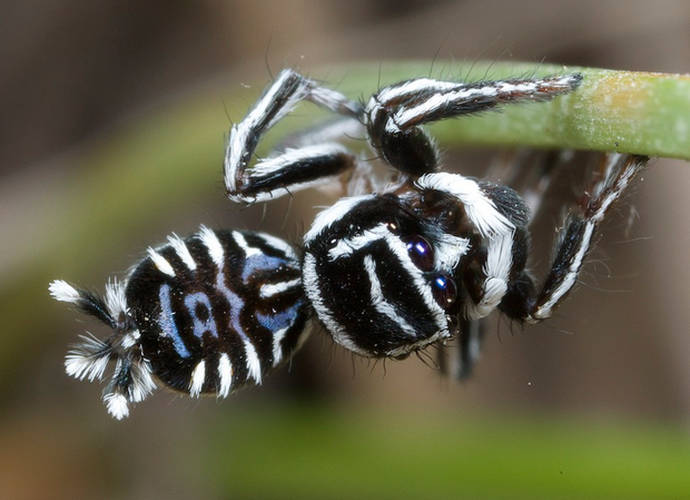Peacock Spiders Display Their Dance Moves
The hottest new dance this summer isn’t going to be found in a swanky Meatpacking District nightclub — all you have to do to learn it is go watch a peacock spider.
Peacock spiders make up a genus called Maratus, a biological classification between species and family. The Maratus genus has within it 43 unique species, 42 of which are native to Australia. The spiders typically live in low bushes and vegetation; not to worry though, peacock spiders though poisonous have jaws that are just too small to actually puncture human skin. The biggest peacock spider typically grows to about .3 inches, or the about size of the tip of a cigarette.
Each individual species within the genus has it’s own dance, most of which scientists believe are used to attract potential mates. The species are easily distinguished from each other by the bright coloration that lends the spiders the “peacock” modifier; during their dances, peacock spiders almost all display their colorful blazes as a show of virility. The dancing spiders are not a new discovery by any means either. The earliest recorded mention of the Maratus genus is in the work of Ferdinand Karch, a German arachnologist in 1878 who discovered the Maratus Amabalis.
Jurgen Otto is now the pre-eminent researcher on peacock spiders, having identified over 20 new species in the past four years. His YouTube channel is devoted to the tiny arachnids and truly showcases the diversity found within the genus. Even this year alone, there have been two new species identified. Nicknamed Sparklemuffins and Skeletorus, they are interesting because of Sparklemuffin’s dance which looks more like a frat bro after his fourth pitcher of Coors and because of Skeletorus’ coloring. Until this year, there had not been any other black and white peacock spiders identified, a finding which prompted researchers to hypothesize that the genus is more diverse than they had before thought.
RELATED ARTICLES
Get the most-revealing celebrity conversations with the uInterview podcast!






Leave a comment